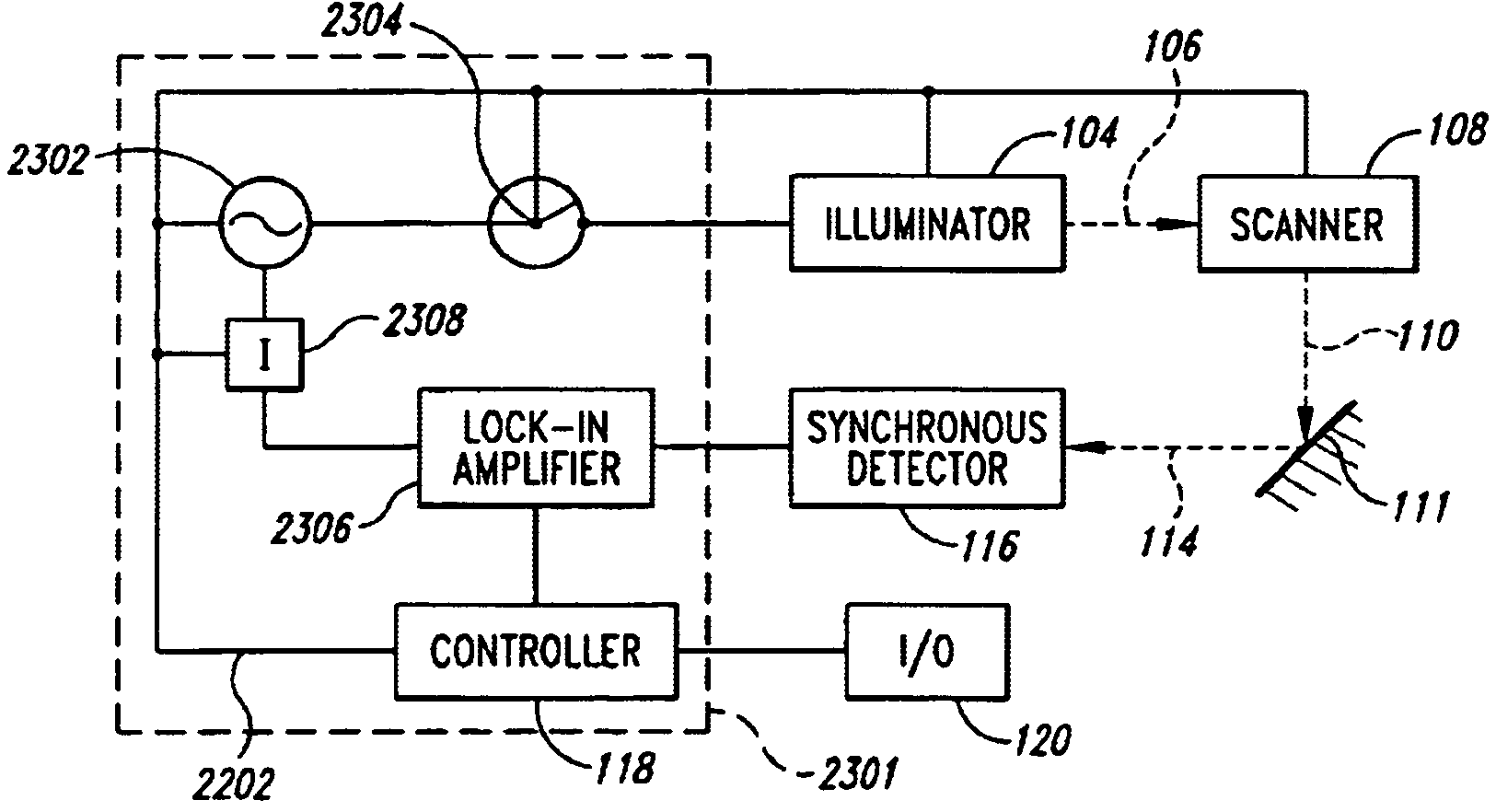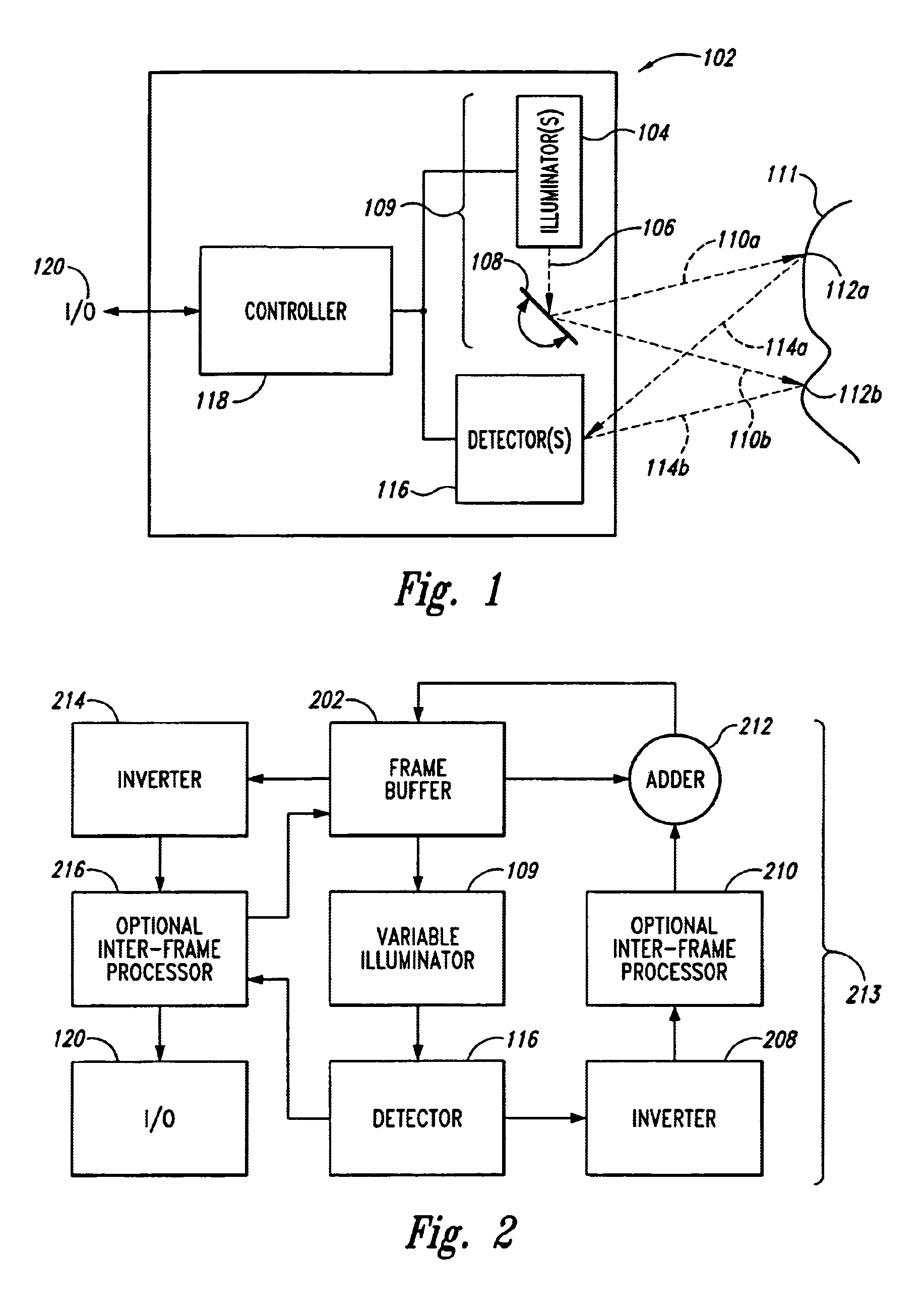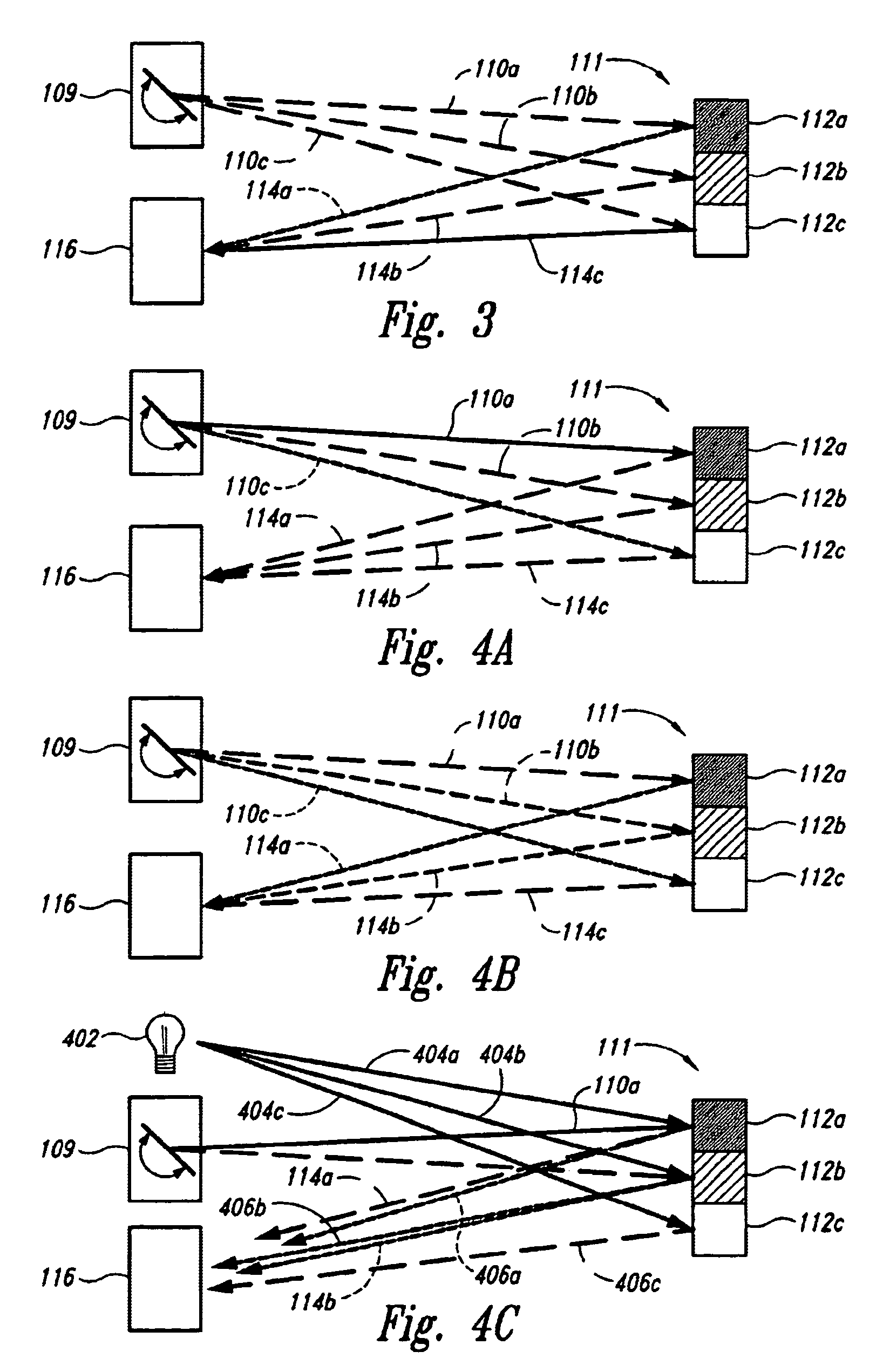Method and apparatus for illuminating a field-of-view and capturing an image
a field of view and illumination technology, applied in the field of methods and apparatus for illuminating a field of view and capturing an image, can solve the problems of flash photography suffering from dynamic range issues, overexposure, and inability to meet the needs of lighting, so as to accelerate the determination of optimal illumination and enhance the dynamic range
- Summary
- Abstract
- Description
- Claims
- Application Information
AI Technical Summary
Benefits of technology
Problems solved by technology
Method used
Image
Examples
Embodiment Construction
[0064]FIG. 1 shows a block diagram of a scanned beam imager 102 that comprises one form of a variable illumination system. An illuminator 104 creates a first beam of light 106. A scanner 108 deflects the first beam of light across a field-of-view (FOV) to produce a second scanned beam of light 110. Taken together, the illuminator 104 and scanner 108 comprise a variable illuminator 109. Instantaneous positions of scanned beam of light 110 may be designated as 110a, 110b, etc. The scanned beam of light 110 sequentially illuminates spots 112 in the FOV. Spots 112a and 112b in the FOV are illuminated by the scanned beam 110 at positions 110a and 110b, respectively. While the beam 100 illuminates the spots, a portion of the illuminating light beam 100 is reflected according to the properties of the object or material at the spots to produce scattering or reflecting the light energy. A portion of the scattered light energy travels to one or more detectors 116 that receive the light and pr...
PUM
 Login to View More
Login to View More Abstract
Description
Claims
Application Information
 Login to View More
Login to View More - R&D
- Intellectual Property
- Life Sciences
- Materials
- Tech Scout
- Unparalleled Data Quality
- Higher Quality Content
- 60% Fewer Hallucinations
Browse by: Latest US Patents, China's latest patents, Technical Efficacy Thesaurus, Application Domain, Technology Topic, Popular Technical Reports.
© 2025 PatSnap. All rights reserved.Legal|Privacy policy|Modern Slavery Act Transparency Statement|Sitemap|About US| Contact US: help@patsnap.com



